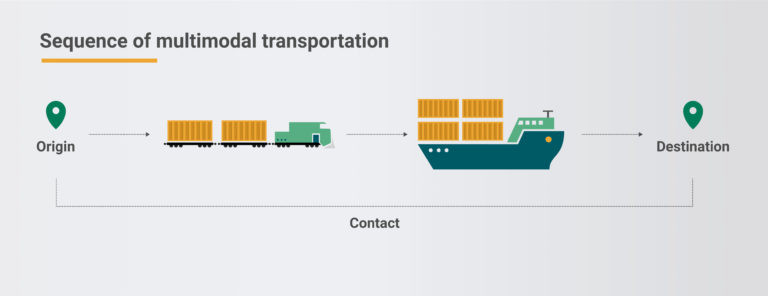What is Multimodal Transport?

Multimodal transport (or combined transport) as per definition is a combination of at least two or more different modes to move your cargo from one country to another. The main characteristic of multimodal transport is that even though it includes various modes of transportation, it still falls under one single bill of lading. That means the carrier is fully liable for the entire carriage even though it’s performed by different modes of transport such as Air, Rail Road, or Sea.
Multimodal transportation with example
Let’s understand multimodal transportation with an example:
For instance, take a freight between Hamburg to Shanghai under multimodal transportation. After the cargo is packed in the containers, the carrier sends their own designated trucking company to pick up the containers in Hamburg. It then brings it to the Hamburg Port. Once it reaches Shanghai, it’s again transported to the final destination by the trucking company that works under the carrier.
The carrier takes full responsibility from the point of pick-up to the drop-off at the final destination. The whole process needs only one contract.
Pros and cons of multimodal transportation
Multimodal mode of transportation is efficient in many ways but as a shipper, you must know the benefits and disadvantages. This will help you understand your needs better and make an informed decision. Let’s have a quick look at some of the pros and cons:
Pros of multimodal transportation:
- There’s a decrease in coordination expenses of a shipper
- There’s a centralization responsibility, mainly of the logistics provider. One carrier is liable for the entire movement
- The combination of different means of transport makes the delivery faster.
- Having one single contract is more practical and requires less logistic effort from the sender.
Cons of multimodal transportation:
- You may not be able to choose the sub-carrier on a specific part of the route.
- No negotiation takes place for each carrier.
